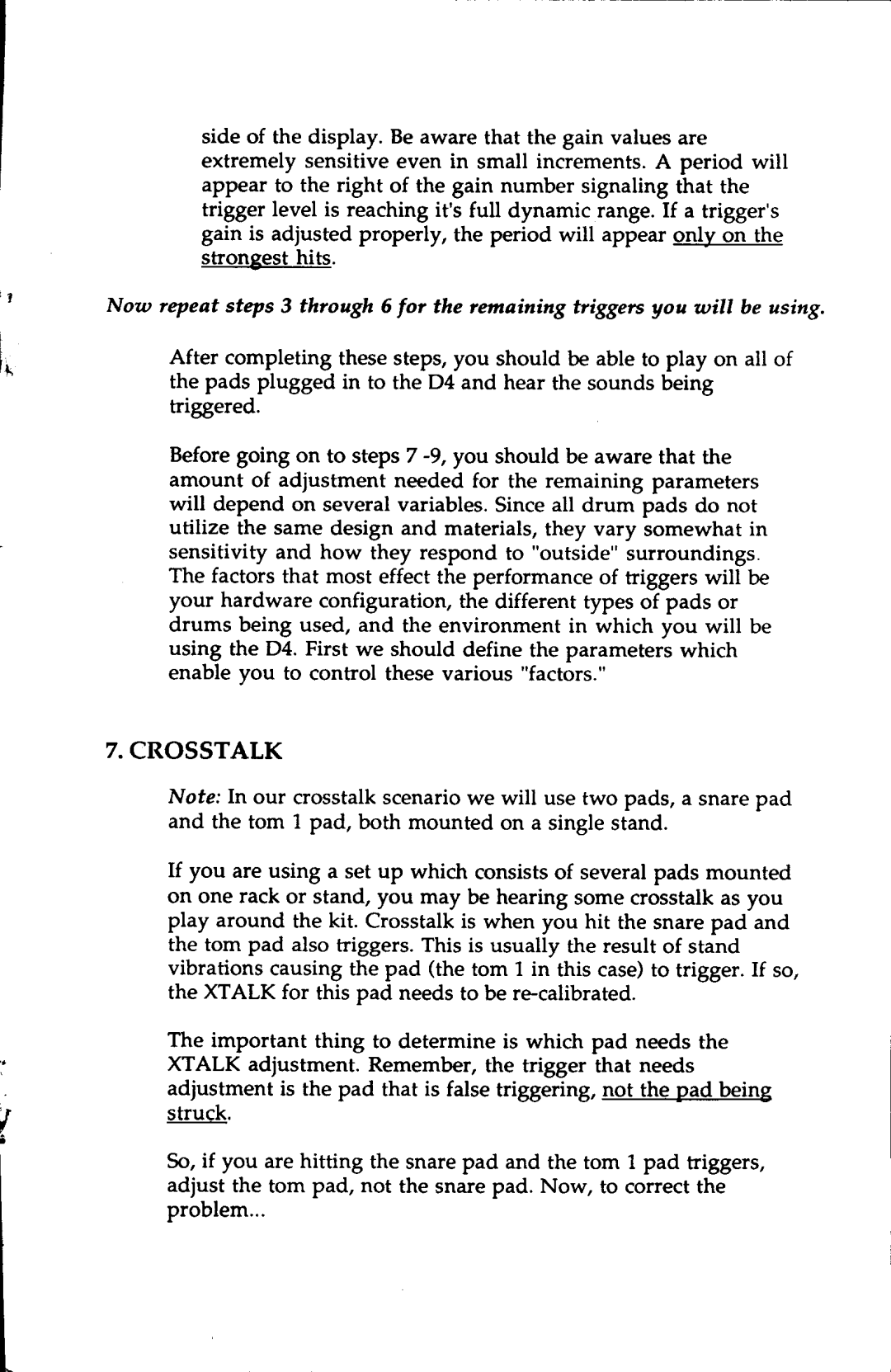
' ,
i*
side of the display. Be aware that the gain values are extremely sensitive even in small increments. A period will appear to the right of the gain number signaling that the trigger level is reaching it'sfull dynamic range. If a trigger's gain is adjusted properly, the period will appear only on the stronsest hits.
Now repeat steps 3 through 6 fot the remaining ttiggers you anill be using.
After completing these steps, you should be able to play on all of the pads plugged in to the D4 and hear the sounds being triggered.
Before going on to steps 7
utilize the same design and materials, they vary somewhat in sensitivity and how they respond to "outside" surroundings
The factors that most effect the performance of triggers will be your hardware configuration, the different types of pads or drums being used, and the environment in which you will be
using the D4. First we should define the parameters which enable you to control these various "factors."
7.CROSSTALK
Nofel In our crosstalk scenario we will use two pads, a snare pad and the tom 1 pad, both mounted on a single stand.
If you are using a set up which consists of several pads mounted on one rack or stand, you may be hearing some crosstalk as you play around the kit. Crosstalk is when you hit the snare pad and the tom pad also triggers. This is usually the result of stand vibrations causing the pad (the tom 1 in this case)to trigger. If so, the XTALK for this pad needs to be re.calibrated.
The important thing to determine is which pad needs the XTALK adjustment. Remember, the trigger that needs adjustment is the pad that is false triggering, not the pad being struck.
So, if you are hitting the snare pad and the tom 1 pad triggers, adjust the tom pad, not the snare pad. Now, to correct the problem...
